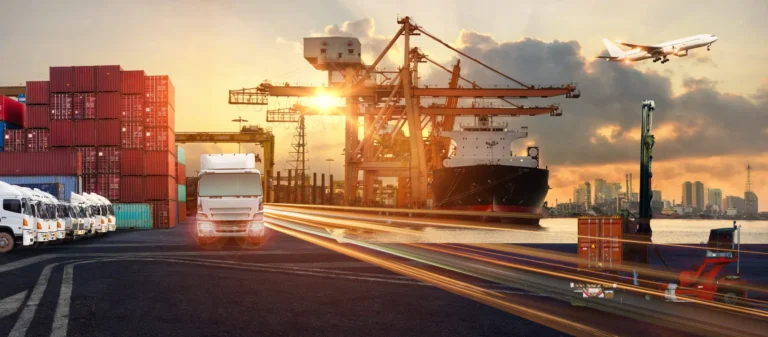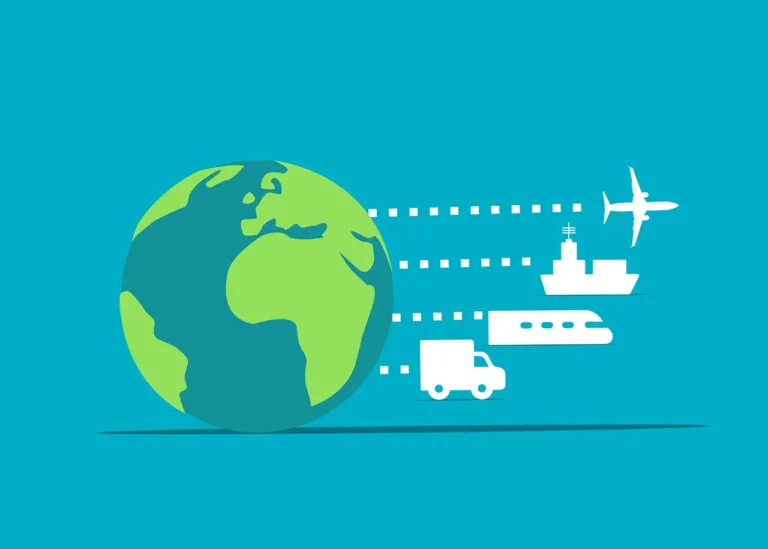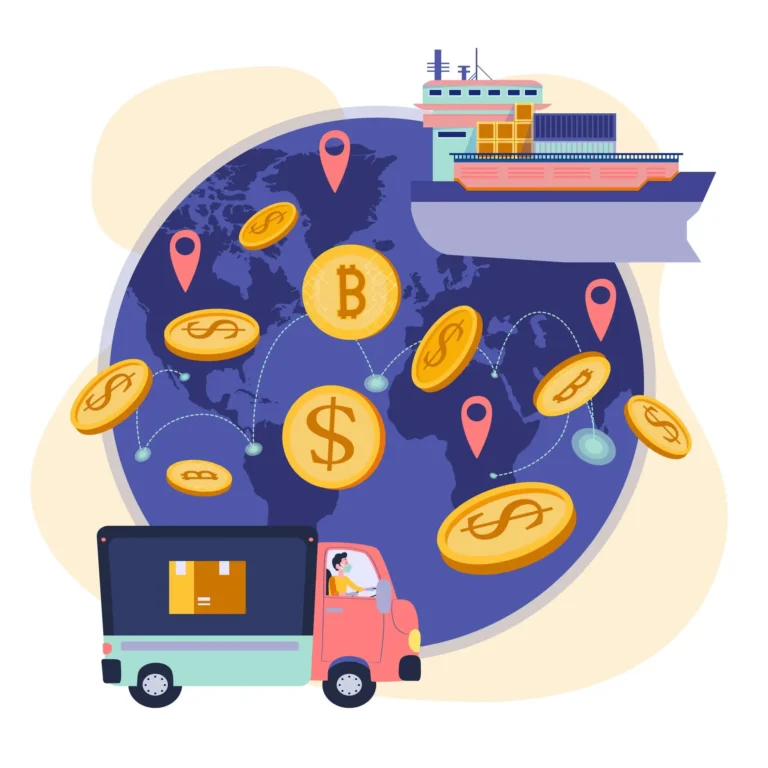12 Supply Chain Challenges in 2024 That Need Your Immediate Attention
In 2024, businesses are facing supply chain disruptions like never before. From unpredictable raw material shortages to rising energy costs, these hurdles are testing resilience across industries. Companies must adapt swiftly to meet demand, manage costs, and stay competitive in a global market.
This blog dives into the 12 most pressing supply chain challenges and offers practical solutions to overcome them. Whether you’re grappling with freight volatility, cybersecurity risks, or sustainability pressures, you’ll find actionable strategies to future-proof your operations.
Let’s explore how businesses can tackle these challenges head-on and transform them into opportunities for growth.
The Current State of Global Supply Chains
Global supply chains remain fragile as businesses navigate persistent challenges. Disruptions caused by the COVID-19 pandemic, geopolitical conflicts, and climate-related events have strained networks globally. In 2024, supply chains face further complexities with rising costs, labor shortages, and escalating sustainability demands. Businesses are under pressure to adopt more agile, resilient, and technology-driven approaches to maintain operational efficiency.
Challenge 1: Persistent Material Shortages
Material shortages continue to hinder production across industries. Limited availability of semiconductors, critical minerals, and basic raw materials creates bottlenecks in manufacturing. These shortages stem from disrupted supply routes, geopolitical tensions, and uneven demand-supply dynamics. Delays in securing materials not only affect timelines but also impact customer trust and revenue.
How to Secure Reliable Supply Sources
- Expand supplier networks: Work with multiple suppliers across different regions to mitigate reliance on a single source.
- Localize sourcing: Partner with regional vendors to minimize shipping risks and enhance supply chain resilience.
- Strategic inventory planning: Maintain safety stocks of critical materials when market conditions allow.
- Build supplier partnerships: Foster collaborative relationships to improve reliability, communication, and access to resources during disruptions.
Challenge 2: Freight Rate Volatility
Freight costs have fluctuated unpredictably, driven by fuel price hikes, demand shifts, and supply chain bottlenecks. The soaring cost of transportation adds significant pressure to margins, especially for small and medium businesses. Without careful planning, businesses risk overspending and missing out on cost-saving opportunities.
Strategies for Freight Cost Optimization
- Use freight rate comparison platforms: Regularly compare shipping rates to identify cost-effective options.
- Negotiate long-term contracts: Partner with logistics providers that offer fixed-rate agreements to avoid sudden cost spikes.
- Optimize shipping operations: Consolidate shipments and streamline routes to reduce transit times and fuel expenses.
- Consider alternative transport modes: Use rail or sea freight when suitable to balance costs and efficiency.
Challenge 3: Lack of Supply Chain Visibility
A lack of visibility across supply chains causes inefficiencies, delays, and errors. Without clear, real-time data, businesses struggle to identify issues and make informed decisions. Limited transparency also leads to higher risks in areas like inventory management, demand planning, and supplier performance.
Leveraging Technology to Enhance Visibility
- Adopt advanced supply chain tools: Use systems like ERP software or blockchain solutions for real-time tracking and traceability.
- Leverage IoT-enabled devices: Equip shipments and warehouses with sensors for monitoring temperature, location, and status.
- Integrate data across platforms: Ensure seamless communication between stakeholders by unifying systems and eliminating silos.
- Collaborate with supply chain partners: Share data transparently to enhance coordination and reduce blind spots.
Challenge 4: Rising Fuel and Energy Costs
Fuel and energy prices directly influence supply chain expenses. Higher transportation costs affect logistics, while rising energy costs strain production and warehousing budgets. These increases are driven by global energy market instability, making cost control more difficult.
Energy-Efficient Logistics Solutions
- Invest in green technology: Transition to hybrid or electric fleets to reduce fuel dependence and cut emissions.
- Optimize delivery routes: Use AI tools to map out efficient routes and minimize fuel consumption.
- Implement renewable energy in operations: Use solar, wind, or other renewable energy sources to power facilities.
- Collaborate on shared logistics: Pool resources with other companies to reduce costs and optimize vehicle loads.
Challenge 5: Geopolitical Instability and Trade Barriers
Geopolitical unrest and shifting trade policies continue to disrupt global trade. Restrictions, sanctions, and tariffs have heightened risks for companies operating in international markets. Relying on a single country or region for materials amplifies vulnerabilities when tensions escalate.
Diversifying Sourcing to Mitigate Risks
- Broaden sourcing regions: Identify reliable suppliers in politically stable regions to reduce exposure to conflicts.
- Leverage free trade agreements: Take advantage of partnerships and trade agreements to lower costs and avoid restrictions.
- Maintain a global supply strategy: Balance regional and international suppliers to spread risks.
- Stay proactive on regulations: Monitor changes in trade laws and tariffs to plan ahead and adjust strategies accordingly.
These updated sections emphasize clarity, practical solutions, and detailed insights aligned with the challenges businesses face in supply chain management today.
Challenge 6: Increasing Sustainability and ESG Pressures
Sustainability is no longer optional. Governments, consumers, and investors demand accountability in environmental, social, and governance (ESG) efforts. However, aligning sustainability initiatives with profitability is complex. Businesses must reduce emissions, minimize waste, and ensure ethical practices while staying cost-competitive.
Building Sustainable and Resilient Supply Chains
- Transition to renewable energy: Power warehouses and manufacturing units with solar or wind energy to lower carbon footprints.
- Adopt circular practices: Incorporate recycling programs and upcycle waste into usable materials.
- Choose eco-friendly packaging: Use biodegradable or reusable packaging to appeal to environmentally conscious buyers.
- Collaborate on sustainability goals: Work with vendors and logistics providers committed to reducing emissions and maintaining ethical standards.
- Leverage technology: Track and report emissions with digital tools to comply with ESG regulations and build transparency.
Challenge 7: Labor Shortages and Workforce Gaps
Labor shortages have intensified due to retiring workers, limited skilled talent, and shifting workforce preferences. These shortages increase recruitment costs, delay projects, and create operational inefficiencies. Companies must innovate to manage these gaps effectively.
Adopting Automation to Fill Workforce Gaps
- Implement robotic automation: Use robotics for repetitive tasks like packaging and assembly to maintain production levels.
- Deploy AI for decision-making: Utilize AI-driven systems for demand forecasting, inventory management, and customer support.
- Upskill your workforce: Train employees in digital tools and advanced equipment to improve efficiency and engagement.
- Enhance job flexibility: Offer remote and hybrid work options for non-manufacturing roles to attract a wider talent pool.
Challenge 8: Cybersecurity Threats in the Digital Era
Supply chains are increasingly vulnerable to cyberattacks. Ransomware, phishing, and data breaches disrupt operations, steal sensitive information, and damage reputations. With rising reliance on digital tools, cybersecurity is more critical than ever.
Securing Digital Supply Chain Operations
- Adopt multi-layered security protocols: Implement firewalls, intrusion detection systems, and advanced encryption for all digital assets.
- Conduct regular audits: Identify vulnerabilities in systems and processes through frequent security assessments.
- Train your workforce: Educate employees to recognize and respond to phishing attacks and malware threats.
- Collaborate with cybersecurity experts: Partner with IT firms specializing in supply chain security to stay ahead of emerging threats.
Challenge 9: Climate-Driven Disruptions
Extreme weather events and rising temperatures are causing transportation delays, damaging infrastructure, and increasing insurance costs. Businesses must anticipate these disruptions and adapt to protect their supply chains.
Preparing Climate-Resilient Infrastructure
- Fortify facilities: Invest in climate-resistant materials and designs to protect warehouses and manufacturing plants.
- Use predictive analytics: Deploy tools that analyze historical and real-time weather data to anticipate potential disruptions.
- Diversify transport options: Secure alternative routes and modes of transportation to minimize delays during adverse weather.
- Build local supply hubs: Establish regional hubs closer to demand centers to reduce dependency on long-haul routes.
Challenge 10: Demand Forecasting Complexity
Changing consumer behavior, market volatility, and external events make demand forecasting harder. Errors in predictions lead to overstocking or stockouts, both of which impact profitability and customer satisfaction.
AI-Driven Solutions for Better Forecasting
- Utilize machine learning models: Analyze historical sales, market trends, and customer data for accurate demand predictions.
- Incorporate external factors: Include economic indicators, weather patterns, and industry-specific trends in forecasting models.
- Update forecasts in real time: Use live data to adjust predictions instantly, ensuring agility in meeting demand shifts.
- Automate inventory management: Integrate AI systems to maintain optimal stock levels and reduce wastage.
Challenge 11: Inflation and Rising Costs
Rising costs of materials, transportation, and labor strain budgets. Passing these costs to customers risks losing market share, while absorbing them reduces margins. Companies must find innovative ways to stay competitive.
Strategies for Cost Containment
- Streamline operations: Identify inefficiencies in processes and adopt lean manufacturing principles to reduce waste.
- Negotiate with suppliers: Build strong relationships to secure better rates and favorable terms.
- Adopt energy-saving technologies: Reduce operational costs by optimizing energy use in manufacturing and warehousing.
- Implement dynamic pricing: Adjust product prices based on demand, costs, and competitor benchmarks to protect margins.
Challenge 12: Digital Transformation Challenges
Digital adoption is essential but comes with hurdles like integration issues, costs, and employee pushback. Companies must prioritize solutions that are scalable and align with their long-term goals.
Tools for Seamless Digital Integration
- Choose modular solutions: Implement tools that can scale and integrate with existing systems without overhauling infrastructure.
- Offer comprehensive training: Equip employees with the skills to adopt new systems confidently and efficiently.
- Prioritize interoperability: Select platforms that enable smooth data exchange between supply chain partners.
- Engage experienced consultants: Work with experts to design and execute a step-by-step digital transformation plan.
How to Overcome These Challenges
Addressing supply chain challenges requires a structured and proactive approach. Success depends on aligning strategies with your business objectives while staying agile in a rapidly changing environment.
Start with collaboration. Engage your suppliers, logistics providers, and partners in open communication to identify potential bottlenecks early. For example, a mid-sized manufacturer recently cut lead times by 20% using a cloud-based tracking system that provided real-time updates across their network.
Innovation is key. Adopt technologies like artificial intelligence for demand forecasting or IoT devices for end-to-end visibility. These tools not only improve efficiency but also provide actionable insights for better decision-making.
Build resilience through flexibility. Create contingency plans for disruptions, whether they stem from geopolitical events, labor shortages, or extreme weather. Diversifying suppliers and maintaining safety stock can help cushion unexpected shocks.
Monitor market trends regularly to anticipate risks before they escalate. Staying informed ensures you can adapt quickly to shifts in costs, regulations, or consumer demands. Strong relationships with your supply chain stakeholders can act as a buffer during unpredictable times.
Looking Ahead: Future-Proofing Your Supply Chain Beyond 2024
The supply chain landscape will continue to evolve, with new challenges and opportunities on the horizon. Businesses that invest in forward-thinking strategies will lead the pack.
Adopt emerging technologies. Blockchain, for instance, offers unparalleled transparency and security for tracking goods and verifying transactions. Advanced robotics and AI can streamline operations, improve accuracy, and cut costs.
Sustainability will remain a top priority. Green logistics practices, renewable energy adoption, and circular supply chain models can reduce environmental impact and meet growing ESG demands. These initiatives also resonate with consumers and investors who value ethical business practices.
Build agility into your operations. Focus on creating adaptable supply chains that can respond to demand fluctuations, regulatory changes, and external disruptions without compromising performance.
Future-proofing requires continuous investment in both technology and human capital. Train your workforce to manage digital tools effectively and foster a culture of innovation. Businesses that act decisively now will be well-positioned to thrive amid uncertainty in the years ahead.






